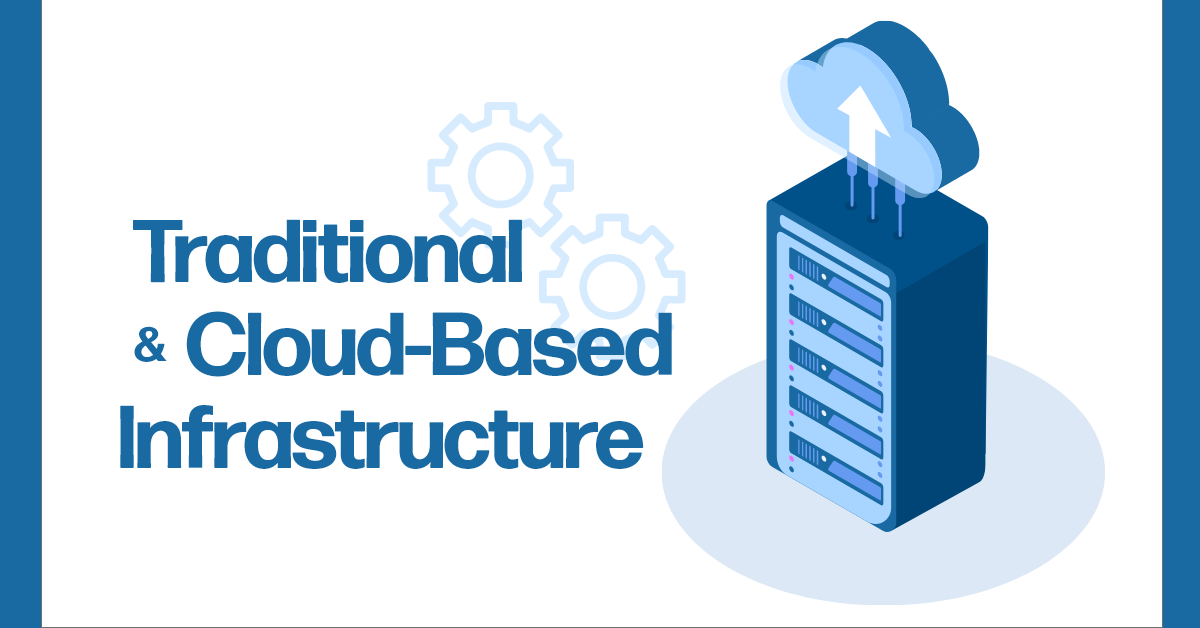
Traditional vs Cloud-Based Infrastructure
IT infrastructure refers to the combined components needed for the operation and management of enterprise IT services and IT environments. A well-designed IT infrastructure assists companies in meeting their objectives while potentially maximizing profits.
There are a couple of approaches to deploying, organizing, and implementing the elements of an IT ecosystem. The most popular are traditional and cloud-based infrastructures.
Traditional Infrastructure
Traditional IT infrastructure is made up of the usual hardware and software components: facilities, data centers, servers, networking hardware desktop computers and enterprise application software solution. Because all of the devices are housed under one roof, it is simple to gain access to proper data and computational power.
However, all this infrastructure requires a significant amount of free space at the deployment site and enough electricity to power on all of the devices and keep them running. As a result, developing and installing this type of infrastructure can end up being more costly than a cloud-based infrastructure.
Traditional IT also relies on an in-house IT team to provide maintenance and support.
This means that in addition to investing money in equipment, you would also need to hire an infrastructure management team, or an outside management group, to monitor the data center, troubleshoot issues, and perform timely diagnostics and improvements.

Pros of traditional infrastructure:
- Traditional Infrastructure is considered the most secure solution because it places full responsibility on your company to manage it.
- Along with the system, you will have a dedicated team that will be deeply engaged in network infrastructure.
- Along with access to the infrastructure, you will also be able to update the software which will help you to be at the forefront of new technological solutions.
Cloud-Based Infrastructure
Cloud-based infrastructure is the collection of hardware and software elements needed to enable cloud computing. It includes computing power, networking, and storage, as well as an interface for users to access their virtual resources.
The major difference between cloud-based infrastructure and traditional infrastructure is that you don’t need any equipment in your office to sustain the cloud-based infrastructure. As a result, you won’t be spending as much money on hardware or the personnel to manage your agency’s internal IT infrastructure. Instead, find a cloud service provider and rent the cloud storage space required to migrate your entire internal funnel to it.

Pros of cloud-based infrastructure:
- Excellent scalability and versatility: if your company wants to grow quickly, flexibility and scalability are essential. Furthermore, cloud systems have no data limits and much more computing engine power.
- Better capabilities and automation: by incorporating cloud technologies into your business, you can avoid the headaches that come with equipment maintenance and security concerns. All of those processes are outsourced to a vendor, who offers you a cloud-based framework, leaving you to concentrate on other critical aspects of the business.
- Cost-effectiveness: you might be shocked at how affordable cloud IT infrastructure is. This is primarily due to the fact that you only pay for the services you are using. You shouldn’t need to invest money on equipment, monitoring, updates, or other issues that the vendor is now handling.
Conclusion
In order to stay ahead of the competition, a well-established IT infrastructure is a must. IT infrastructures are the driving force of any modern industry and can provide the next generation of technology and services to develop IT environments that are highly flexible, scalable and agile.
If you are planning on moving to a cloud-based infrastructure, contact OceanTech to see how we can help with all of your IT Asset Disposition needs.


